Author(s): Elisa Lo Monaco and Alba Triscari
Historical excursion of the natural sciences in Messina (strict and district) between the two earthquakes (1783-1908); four revolutions (1820-1837-1848-1860); two major cholera epidemics (1837-1887) through the studies of a family of pharmacists that contributed to the cultural and scientific growth of the city. The Arrosto were exemplary representatives of Sicilian pharmaceutical art, they practiced their profession, from the end of the eighteenth century until the middle of the last century, during the age d’or of the pharmacy understood as a place of research, preparation and dispensing of the drug.
Illuminists, chemists, botanists, doctors but above all pharmacists, the Arrosto kept track, in a systemic way, of all their activities. The documents covered by this research cover a period of time ranging from 1815, the year of printing of the very rare Messina Pharmacopoeia to the first half of the twentieth century when, following the sale of the pharmacy, the compilation of the unpublished Manuscript Book of the Arrosto Pharmacy was completed.
This report is structured in two sections, one historical part and one comparative between the Pharmacopoeia and the Recipe.
This study allowed us to ascertain that the actual publication date of the volume Messinese Pharmacopoeia (1815), in its entirety and as it appears to be bound and guarded, is subsequent to 1826 but no later than 1834.
Relative to the unpublished Manuscript, given the time interval in which it was written (about sixty years) and the number of compilers (at least three), the change of the pharmacy workshop could be observed. The master preparations are limited to some historical formulations of the pharmacy and the new medicinal formulations are predominantly cosmetic and of non- pharmaceutical preparations not yet produced by the nascent industries, moreover, often, industrial seed compounds are used to complete the recipe.
The parable of the Arrosto is the paradigm of the Italian pharmacy workshop that lives throughout the nineteenth century an important expansionary phase of research and production and then decays at the same time as the beginning of the marketing of industrial ethical drugs and disappear completely with the establishment of the National Health Service.
Europe, except England and Sicily, is under Napoleonic hegemony. Science and culture speak French. Following the anti-Spanish revolt (1674-1678) and the consequent restoration, the city of Messina, which had been in the ’500 heart of the Mediterranean and the center of the naval trade between East and West, loses all its privileges. The Strategoto and the Messinese Senate are abolished, the senatorial palace demolished and sprinkled with salt, the Mint transferred to Palermo. The precious relics of the cathedral are donated to the churches of cities loyal to Spain. The University of Messina, one of the oldest and most prestigious in Italy, at which Giovanni Battista Cortesi, Pietro Castelli, Marcello Malpighi taught is suppressed; the 1archive transferred to Palermo. The oldest Botanical Garden on the island, Hortus Messanensis, made by Pietro Castelli, a disciple of Andrea Cisalpino and curator of the Farnesian Gardens, is destroyed. The Botanical Garden had a rectangular plan and was divided into fourteen sectors (hortuli) each with the name of a saint. In addition to the numerous exotic species introduced, one of the most original 2aspects was the subdivision criterion, the various plant species were grouped into fourteen classes: the Hortus becomes de facto the material of its systematic-phylogenetic classification. The city, declared ‘civilly dead’, becomes a military governorate. It is the darkest period in the city’s history. In 1743 a great pestilence decimation the population which is reduced from 40321 to 12480. Forty years later (1783) the first major earthquake in the strait destroys what is left. Napoleon cannot penetrate Sicily but the winds of the Enlightenment have no borders. A generation of intellectuals is about to arise that will give life to cultural circles, Masonic consortia and academies like the one that still exists: the Accademia Peloritana dei Pericolanti. In addition to some nobles, this class of intellectuals consisted of apothecaries, aromatai, seminarians, doctors, barbers, pharmacists including Francesco Arrosto, progenitor of this family of pharmacists that were the subject of our study (Figure 1).
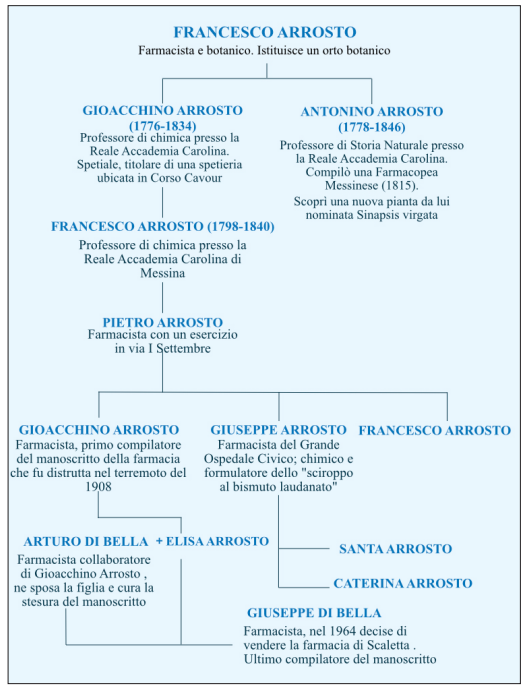
Figure 1: Genealogy of the Roast Family and History of the Manuscript
Francesco Arrosto, Pharmacist, married to Filippa Aloisio who belonged to an important family of apothecaries and protomedics, created first for private use then public a garden of simple for the use of the pharmacy which then became a real botanical garden, frequented by the men of science of the city. The environment was revolutionary as can be the one rich in intellectual ferment but deprived of its historic university by the authoritarian will of the Bourbon state.
The eldest son Gioacchino Arrosto (1776-1834) he was born in Messina in 1776, stimulated by his father to study the sciences and pharmacy, he completed the university in Naples studying chemistry with prof. Saverio Magrì and botany and entomology with the famous botanist Vincenzo Petagna. Gioacchino was above all an Enlightenment, an eclectic, an encyclopedist with a great passion for chemistry. He analyzed the chemical composition of the hydrosulfurized waters of the Vulcano cave, studied and analyzed the thermal waters of Alì Marina, the essence of citrus fruits and especially bergamot, the reactions of bicarbonate as an illuminating gas. He became the most renowned public master and expert of the court to solve cases of possible poisoning and as an entomologist he formulated several pharmaceutical preparations with chanterelle and cochineas. The most important recognition was obtained by King Ferdinand II himself for the construction of an Entomocapo sack, which allowed the extermination of the grasshoppers, a real social plague, since they had been the cause of the destruction of the biad and the wheat crops of the Nisseno. He died in 1834 of hydropsy.
The youngest son Antonino Arrosto (1778-1846) also because of his shy character, he lived in the shadow of the major following the same chemical, pharmaceutical and botanical studies. Systemic botany was the true passion of Antonino who maintained correspondence with Neapolitan Vincenzo Petagna and Giovanni Gussone and with Karel Presl of Czech origin. During his excursions on the Peloritani, Antonino identified a new endemic species: the Sinapsis virgata that the Gussoni classifies as Gypsophilla arrosti and the Raphinesque Arrostio dichotoma. Antonino particular attention to the care of the Botanical Garden structured by his father. He found an ancient herbarium of the seventeenth century attributed to Pietro Castelli, founder of the Botanical Garden Messinese and reconstructed the finds to draw. Among his publications, always characterized by extreme scientific and systemic rigor, we remember the Farmacopea Messinese and Manifesto e prospetto, di un trattato elementare di farmacia secondo le cognizioni moderne di storia naturale e di Chimica both for the types of Fiumara-Nobolo publishers in Messina.
Francesco Arrosto Junior (1798-1840) son of Gioacchino, he was appointed in 1835 professor of chemistry and pharmacology at the Carolina Academy in Messina a “parauniversity”, if you can say so, wanted by King Francis I. Francesco was a specialist and physician, he was an effective member of many cultural consortia and in particular was Secretary, for the physical and mathematical sciences section of the Reale Accademia Peloritana dei Pericolanti. His liberal inclinations during the insurrections of 1837, called the cholera riots because they broke out at the same time and because of the cholera epidemic, cost him the chair of chemistry. In his text Above the history and the healing of a new periodic fever he managed to distinguish two types of choleral fever: simple and larval fever.
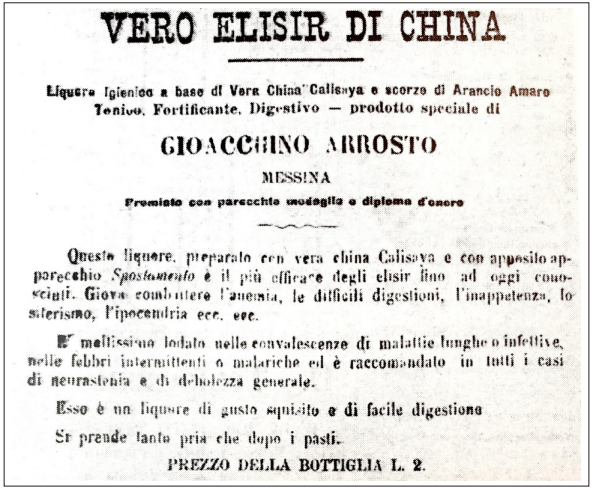
Figure 2: Advertising Blurb of 1901 of the Political Newspaper, Messina Newspaper “L’Aquila Latina”
In the Kingdom of Naples, the therapeutic treatment for cholera patients was predominantly symptomatic: opium was used as a constipation and analgesic and mucilage as a refreshing. Revulsives were often used and sometimes the caustication of the heels was carried out. Francesco intuits the potential of quinine sulfate recently isolated but extensively treated in the first addition of the Farmacopea Messinese, edited by his uncle Antonino. The dose used was 30 grains/day (one grain corresponded to the weight of one grain of wheat, about 500 mg).
Direct Grandchildren of Francesco Arrosto junior who distinguished themselves in the pharmaceutical arts were Gioacchino Arrosto junior and Giuseppe Arrosto.
Gioacchino Arrosto junior worked as a pharmacist at the family pharmacy located in via I Settembre in Messina. He was the first compiler of the Arrosto Manuscript. The oldest pharmaceutical preparations reported are his, improving and adapting ancient traditional preparations to the ‘modes’ and the substances that could be found. He undertook a semi-industrial production with the China Elixir, used as a digestive tonic (Figure 2).
The Arrosto’s China Elixir was prepared thanks to a particular moving tool according to a family recipe also reported in the manuscript by Dr. Arturo Di Bella, collaborator of Gioacchino Junior and husband of his daughter Elisa.
Giuseppe Arrosto was a chemist and pharmacist at the end of 1800 at the Grande Ospedale Civico di Messina. his grandfather Francesco found himself treating the cholera patients of 1837, Giuseppe had to face the epidemic of 1887. Fifty years later the drug of choice was still opium as symptomatic. To this treatment Giuseppe added the Bismuth, famous in fact was the Soluble Bismuth Syrup and the Laudanated Bismuth Syrup.
The Pharmacy of the large Civic Hospital in addition to supplying the hospital sold directly to other pharmacies and retailers.
In 1900 with Giuseppe and Gioacchino junior the pharmacy workshop of the Arrosto family reached its peak. However, the 1908 earthquake will ruin everything: the destroyed pharmacies, Giuseppe and his daughters will be hosted in Catania with other refugees and missing family assets.
Arturo Di Bella and his wife Elisa Arrosto will collect the legacy of Gioacchino by passing on this precious document, a mirror of a family epic.
The Farmacopea Messinese ordered by the Substitute Protomedic General Baron Pietro Alojsio, for the use of his strait and district, was treated by the collegio di Fisici, Aromatarj e Chirurgi including D. Santi Romeo Dr. Physicist, D. Gioacchino Arrosto Physicist Chemical and compiled by Antonino Arrosto Aromatario. The volume in senths and bound in leather, is kept at the University Library of Messina, Rare A91. Copies of this text are not present in any of the other Sicilian regional libraries.
The Pharmacopoeia is structured as follows:
The title page presents the Litter publishing house as typographical indications. Fiumara, and Gius. Nobolo Socj, Regj Impressori and the date 1815 (Figure 3)
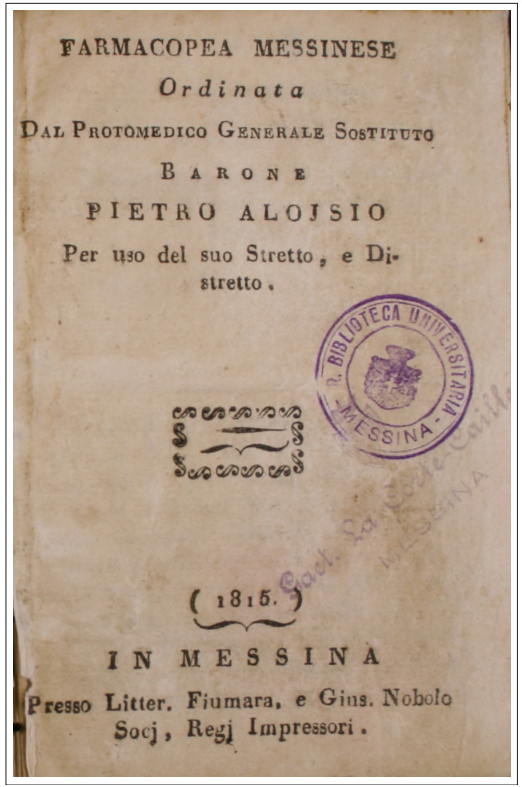
Figure 3: Title Page of the Farmacopea Messinese
The same date is reported in the dedication of the Protomedico Substitute to the Protomedico. However, the text in its entirety, with appendages and additions is certainly of subsequent publication as the first addition reports in detail some extractive processes of alkaloids such as Emetin, Strictin, Quinine Sulfate, processes encoded after 1821. The new chemical nomenclature mentioned in the table is also after 1826 and so also La Pozione Balsamica di concino del Dr. Romeo, Present in the second addition, is a preparation by D. Gioacchino Romeo, included in the Archivi di medicina pratica per la Sicilia del 1834. On the other hand, however, the additions are not detached parts of the book because they have the same abbreviations as the initial part. We can therefore define the time interval of publication of the final volume between 1826 and 1834 as Antonino Arrosto was essentially a systemic botanist and had classified the Scilla with the ancient nomenclature Scylla maritima Lin. and not with the subsequent nomenclature Urginea maritima (L.) Baker .
In the preface to the text, signed by the Substitute Protomedico Barone Pietro Aloisio and addressed to the Marquis D. Antonino Cardillo Protomedico of the City of Messina, to whom he wanted to pay tribute «questa piccola si, ma interessantissima fatica», the reasons that had pushed 4him to commission the writing of the pharmacopoeia and that is «per mettere in una sola veduta tutti quei medicamenti si semplici, che composti, ai quali diverse nomenclature antiche, e moderne convengono, non trascurando la sinonimia dei patrj Antidotarj, per evitare qualunque equivoco che potrebbe nascere a svantaggio del pubblico nell’esecuzione delle attuali ordinazioni» .
The abbreviations used in the text and a table of corrections are then illustrated. The central part of the text consists of the description of Simple Medicaments and Compound Medicaments.
In the part dedicated to simple medicaments, the list of substances is shown in alphabetical order, indicating three names for each:
«il primo è quello officinale, il secondo storico naturale, il terzo vernacolo», then each medicine is 6identified by the technical name and the common dialectal name. For each substance, the parts most used are then indicated and whether they are indigenous drugs, exotics or substances on the market. Let’s find for example the vulgar Acetosa or Rumex acetosa Lin. of which leaves and roots were used, vulgarly known as Airedda maggiuri, referred to as an indigenous plant.
The weights went from the wheat, corresponding to «un grano di mezzana grandezza di orzo», alla «libra di oncie dodeci». Among the measures we had for example the 7Pugillo corresponding «a quello che possono prendere i primi tre diti della mano»; the cucchiarino, the cucchiaio, the bicchiere.
The part dedicated to compound medicaments describes the pharmaceutical preparations according to the alphabetical order of the materials used for their preparation.
For each preparation, the most commonly used name is indicated as the title and followed by synonyms, accompanied by the abbreviation of the pharmacopoeia from which they are taken. In particular, reference is made, in addition to local historical texts Antidotarium Messanense of the Cortesi of 1629 and to the rarest Antidotarium speciale Sacræ Domus Magni Hospitalis Nobilis Urbis Messanæ of the Truglio of 1642, To almost all the best known eighteenth-century pharmacopoeias up to the Brugnatelli Farmacopea Generale Napoli 1808 And the third edition of the Farmacopea Ferrarese del Campana del 1811.
The procedures indicated for the preparations are taken from one of the pharmacopoeias mentioned and almost always from the former. The quantities of each component of the preparation are reported in parts «per agevolare ad ognuno le frazioni per la quantità, che voglia adoprare».
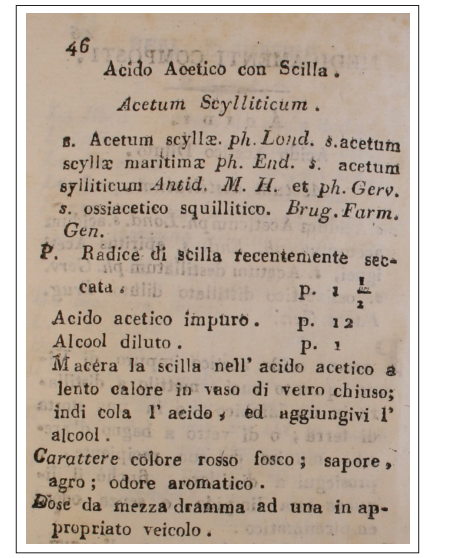
Figure 4: Acetic Acid with Scilla present in the Farma copea Messinese
This part of the text is divided into 21 sections:
Acidi (10 Preparations) It is reported Acido Acetico con Scilla o Acetum Scylliticum obtained from impure acetic acid, diluted alcohol and recently dried Scilla root. The Scylla said Scilla maritima Lin. or vulgarly Cipuddazzu, Is macerated in acetic acid (Figure 4). L’aceto scillitico is present in the preparation of the Ossimele Scillitico of the Arrosto manuscript, with the following formula:«Miele p.6, Aceto scillitico p.1 1/2, Acqua p.2. Mischia insieme, cuoci, chiarifica e porta a consistenza di sciroppo» . 8
Acque (7 Preparations) It includes for example Acqua di Rose, di cetro distillata, di Calce, di scordio composta o Acqua Theriacalis, containing the famous Elettuario teriacale.
Alkali (3 Preparations) They are reported Ammoniaca in liquore, Ammoniaca in liquore succinata and Potassa o Lapis ad cauterium.
Alcooli (8 Preparations) The first formulation is Alcool o Spiritus vini rectificatus. Another example is the Alcool di acido solfurico. There is on this page a marginal scolium of a preparation based on Antimony Sulfide (Antimonial Ethiopian) that refers, for the preparation, to the Mineral Ethiopian present later in the pharmacopoeia. At this point they are inserted Carbone di oppio, Cataplasma di semi di sinape o Sinapismus and Conserva di Cetro. Following the procedure of the latter, other preserves can be prepared «usando però le rispettive parti dei vegetabili».
Decozioni (5 Preparations) Among the decoctions we find that of Poligala Virginiana Simple and composed. The manuscript contains only one preparation based on Poligala, it is a syrup that was used for the treatment of convulsive cough. Then they follow the decoction of Sarsapariglia composto di Maurizio, di Musitano, di P.E. All three formulations contain deer horn.
Elettuari (8 Preparations) Among the electors we find that of opium, of scordium, of cinnamon. We find in the text two formulations for the preparation of the Teriaca: the Theriaca Andromachi With a recipe from the Pharmacopoeia seu Antidotarium Messanense of the Cortesi (1629) and Elettuario Teriacale of the Brugnatelli (1808) Which does not contain viper trocisci, has several modifications and was the one that was used most frequently.
Empiastri (16 Preparations) It includes for example Empiastro di piombo o Emplastrum Diachylon simplex, Empiastro di piombo cerato, con le gomme, resinoso. Also characteristic is the use of cantelle in the Empiastro di Cantarelle e di tapsia composto.
Estratti (5 Preparations) The section contains the extract of hemlock, weed, opium and two extracts based on china ranciata, o comune. The procedures reported in the pharmacopoeia for these medicinal products were also used for the preparation of other extracts, of which the dose of use is indicated.
Eteri (2 Preparations) They are reported only Etere solforico e Etere solforico alcoolizato o Liquor Anodynos Mineralis Hoff.
Metalli (2 Preparations) It includes Regolo di Antimonio e Mercurio purificato.
Mieli (4 Preparations) There are honey with acetic acid, dark brown, rosé and elderberry honey. Replacing simple acetic acid with acetic acid with scilla in the preparation of the Miele con Acido Acetico Instead you get the Ossimele scillitico also present in the Arrosto Manuscript.
Mucillagini (1 Preparation) We find Mucillagine di gomma arabica, The process of which may be used to prepare the mucilage of flaxseed, quince and other gums by modifying the amount of water.
Olii (8 Preparations) Oils are classified according to the methods of preparation in: olj fissi per espressione obtained by means of a strettoio among these we find Olio di Mandorle; olj fissi per ebollizione for example 9 Olio fisso con ipperico; olj volatili per distillazione for example Olio Volatile d’Aniso. The same procedure is performed to prepare Cinnamon, Orange Blossom or fennel Seed oil. Finally, they are followed by the olj volatili, e grassi per espressione how Olio d’Alloro and Olio con Zolfo.
Ossidi (9 Preparations) Most of these preparations contain antimony. We also find Iron Oxide red, yellow, black. Also in this section there is a pen note.
Pillole (8 Preparations) Among these Pillole di Aloe, di Aloe con Mirra, di Cinoglossa con oppio, benzoiche composte, Mercuriali gommose.
Polveri (8 Preparations) Let’s find Polvere di cannella composta, di fosfato di calce stibiata, di peonia con indaco, di rose composta, di scamonea stibiata. The Polvere di Ipecacuana con Oppio o Pulvis Dovveri is present in the Arrosto Manuscript.
Sali (23 Preparations) It is the most full-bodied section of the text. In it we find basic compounds for the formulation of masterful and medicinal preparations characteristic of the Arrosto pharmacy workshop, such as Carbonato ammoniacale, liquido, piroleoso, anisato.
Sciroppi (14 Preparations) Among these Sciroppo di Altea, di cinque radici, di cannella, di cicoria con rabarbaro, di viole. There is the formulation of the Etiope minerale, Mentioned in the alcohol section, in the marginal drain. The recipe for simple syrup is also reported.
Soluzioni (3 Preparations) In this section we find Soluzione di gomma arabica, di muriato di mercurio ossigenato e di acetato di piombo, Better known as Aqua vegeto minerale also present in the Arrosto Manuscript with the addition of alcohol.
Tinture (14 Preparations) Among the dyes we find the Tintura di China china composta, di Cantarelle; among the wines instead Vino amaro ferrato e Vino d’oppio composto.
Unguenti (10 Preparations) Most preparations contain mercury. We also find Unguento di Cantarelle, di Elemi, Trementinato.
Then follows the index and the interim tax, accompanied by handwritten additions such as Acqua coobata di Lauro ceraso o Pomata con idro-jodato di potassa. This part ends with the writing FINE but in reality to follow we find two additions.
The first addition contains the Acqua coobata di Lauro ceraso (Whose interim tax had been entered by hand), Emetina, Morfina, Solfato di Chinina, Stricnina Of which the method of preparation is described in detail.
Between the two additions, a section has been inserted in which the names of the medicines changed are indicated, for example Sotto deuto carbonato di Sodio replaces the term Sottocarbonato di soda that we find in the Acqua di Tabacco.
Il manoscritto della farmacia Arrosto The Arrosto Manuscript is owned by Dr. Armando Di Bella. It is an ancient notebook where the pharmacist noted the most frequent galenic preparations or some improvements of recipes already standardized in the various pharmacopoeias (Figure 5).
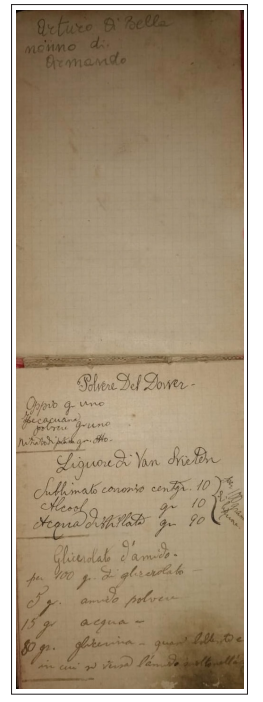
Figure 5: Arrosto Manuscript, First Page
Three scriptures are recognized in the manuscript. The first compiler is certainly Gioacchino Arrosto junior who at the beginning of the ’900 (ante-terremoto) notes some older preparations; subsequently we recognize the hand of Arturo Di Bella, Gioacchino’s collaborating pharmacist and husband of his daughter Elisa. The third compiler is Giuseppe Di Bella, son of Arturo, who transferred the Pharmacy from Messina to Scaletta, then sold it in 1965.
The manuscript spans 70 years of history of the Arrosto pharmaceutical workshop. We can identify in the manuscript some family recipes that had already been reported in the Messinese Pharmacopoeia of 1815. There are also preparations studied and tested by Gioacchino Arrosto and Arturo Di Bella that are not reported in other pharmacopoeias. These are specifically cleansing products or cosmetics.
The era of the pharmaceutical industry had already begun and many preparations were purchased directly from industries, the pharmaceutical workshop was mainly oriented towards cosmetic preparations (Figure: 6-7).
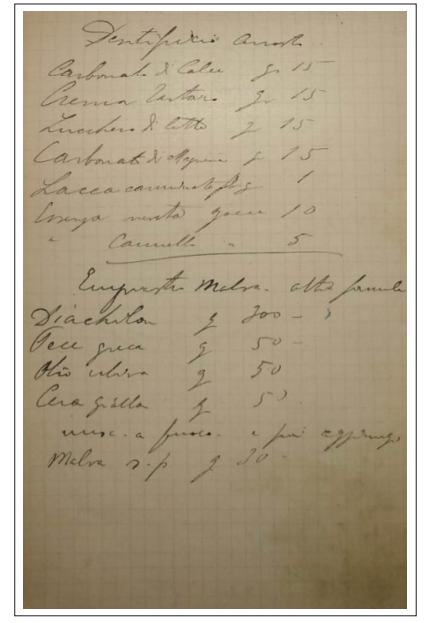
Figure 6: Arrosto Toothpaste and Cologne from the Arrosto Manuscript
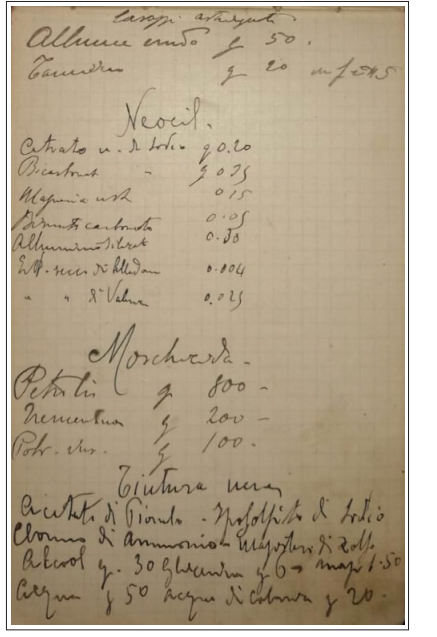
Figure 7: Black tincture from the Arrosto Manuscript
Historical preparations present in the Arrosto Manuscript and comparison with the Messinese Pharmacopoeia
At the end of the 1700s in Sicily, the treatment for every disease was mainly reduced to bloodletting and purges. With the drafting of the Messinese Pharmacopoeia D. Antonino Arrosto had wanted to standardize weights and measures to those different times from region to region and propose innovative medicines. Certainly innovative were the preparations containing the bark of china.
In the Pharmacopoeia there are three preparations containing china and in the addition we findil Solfato di chinina with a detailed description of the extraction process. Also in the recipe book there is a particular attention to the use of china; in fact, we can identify six recipes containing this active ingredient.
Until 1900, china was used as an anti-febrile and pain-relieving symptom. Famous was the Vero Elisir di China of the Gioacchino Arrosto which was prepared with the aid of a characteristic displacement apparatus. The Arrosto were in fact among the first to use china, Francesco for example used it in grains, precisely because in Messina the Florii already marketed china bark powder. However, considering the period of time in which the manuscript was compiled, more than the bark of china, the use of industrial china sulfate was more frequent.
What then can be the ratio of the presence in the manuscript of various Elixir of China? The Elixir simply had a historical value, the elixir of china was an elixir of long life.
The cantharis, Lytta vesicatoria L., is a beetle that has been used since ancient times for cantharidin , a substance present in its elitres with aphrodisiac, anti-inflammatory and vesicular activity.
The chanterelle powder is present in several preparations of the Messinese Pharmacopoeia and in the Arrosto Manuscript in the formulation Pasta di Cantaridi consisting of «Cera gr 200, Olio comune gr 250, Cantaridi sani e freschi gr 250, Euforbio gr 75, Canfora gr 25. Procedimento: Fondi Fig. 6 Arrosto Toothpaste and Cologne from the Arrosto Manuscript. Fig. 7 Black tincture from the Arrosto Manuscript la cera nell’olio a lento calore; polverizza esattamente le cantaridi, indi aggiungi la canfora e l’euforbio spruzzati di alcool. Mescolati bene, mesci l’olio e la cera e mescoli fino a raffreddamento» (Figure 8)
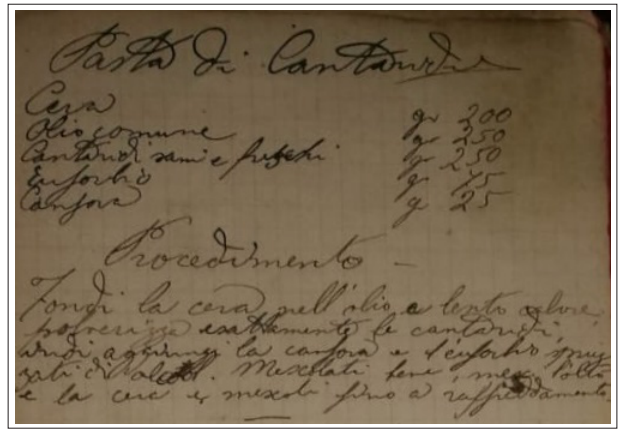
Figure 8: Pasta di Cantaridi from the Arrosto Manuscript.
In the Pharmacopoeia there are tincture, poultice and ointment containing canthas powder. We note a difference in the nomenclature: in the Pharmacopoeia they are indicated as cantarelle, in the manuscript cantaridi. In both writings, the importance of using fresh canthasids is emphasized to ensure the effectiveness of the preparation. In the preparation of the impal (Parmacopea) turpentine is used, while in the paste (maneuscript) there is Euphorbius.
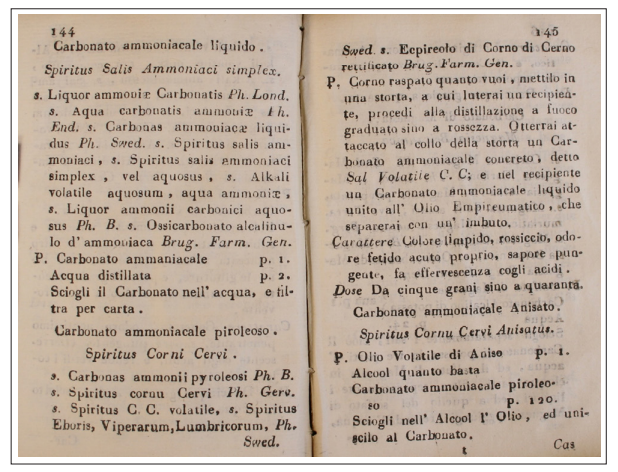
Figure 9: Preparation Pyroleous Ammonia Carbonate or Spiritus Corni Cervi Present in the Farmacopea Messinese.
The Spirito di Corno di Cervo is another of the preparations of the manuscript with historical value. The Spirito di Corno di Cervo It was prepared by using «Acido succinico g 1, Carbonato di Ammonio g 1, H2O g 8. Si sciolga l’acido succinico nell’H2O. Si aggiunga agitando il carbonato di ammonio finché cessi l’effervescenza».
Deer Horn consists mainly of gelatin, lime phosphate, lime carbonate. Its properties are due to ammonia and ammonia carbonate. From the deer horn scraped and subjected to distillation, according to a detailed description in the Pharmacopoeia, a crystalline sublimated was obtained, the pyrous ammonia carbonate (that is with animal oil) concrete called Venison Volatile; an empireumatic aqueous liqueur or Spirit of Deer Horn and a floating thick oil or volatile deer horn oil. (Fig. 9) The Spirit of Deer Horn added to succinic acid represents one of the preparations reported in both writings. It was used as an antispasmodic, diaphoretic, anticonvulsant.
